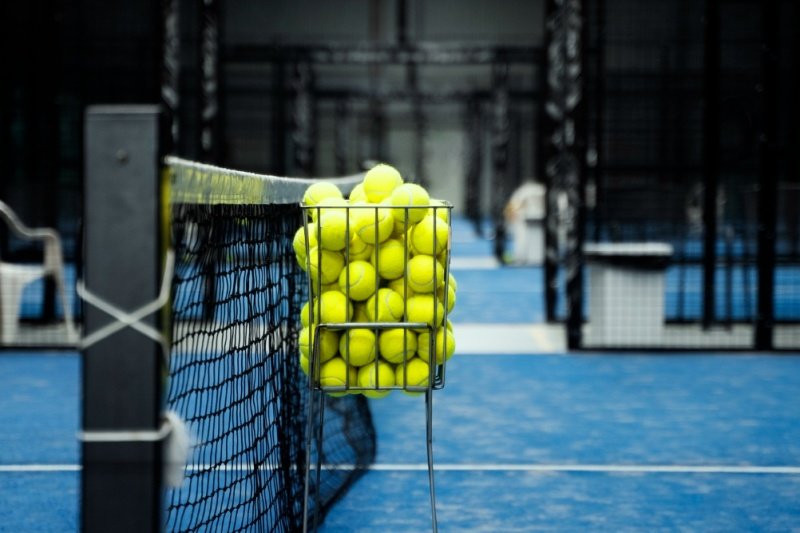Understanding padel court specs is key—especially if you're planning to build or invest in one.
A standard padel court measures 20 meters long by 10 meters wide and is enclosed by glass and mesh walls.
Curious about building one yourself, costs, or surfaces? Let’s explore every angle.
What are the dimensions of a padel court?
Space planning can be tricky, especially when you're unsure of the official size of a padel court.
A regulation padel court is 20 meters long and 10 meters wide, enclosed by walls with a net dividing the center.
H3: Standard Padel Court Layout
These dimensions come from the International Padel Federation (FIP) guidelines1 and are used in all professional tournaments.
H3: Court Design Breakdown
| Component | Measurement | Material |
|---|---|---|
| Length | 20 meters | Standard turf or synthetic grass |
| Width | 10 meters | Same as above |
| Back Walls | 3 meters high | Tempered glass (10–12mm thick)2 |
| Side Walls | Variable (up to 4m) | Mix of mesh + glass |
| Net Height (center) | 0.88 meters | Mesh with side posts |
| Net Height (sides) | 0.92 meters | Standard net rise on both ends |
H3: Why These Dimensions Matter
A padel court’s dimensions influence game dynamics. Smaller than a tennis court, the enclosed walls allow for rebound shots. For manufacturers like us, every centimeter matters—we make sure gear complements this environment perfectly.
How much does it cost to build a padel court in the USA?
Cost is the biggest question for anyone thinking about installing a padel court—especially in the U.S., where it's still growing.
In the USA, building a single padel court typically costs between \$45,000 and \$110,0003, depending on materials and features.
H3: Cost Breakdown
The total expense includes structural components, surface material, lighting, and installation labor. Prices vary based on location and whether it’s indoor or outdoor.
| Item | Estimated Cost Range |
|---|---|
| Steel Frame & Glass Walls | \$20,000 – \$40,000 |
| Synthetic Turf Surface | \$6,000 – \$12,000 |
| Lighting System | \$4,000 – \$8,000 |
| Labor & Installation | \$10,000 – \$25,000 |
| Permits & Site Prep | \$5,000 – \$15,000 |
H3: Cost Considerations
- Indoor courts tend to be more expensive due to roofing and HVAC requirements.
- Imported components (especially glass and turf) can raise costs.
- Local codes may require additional investments in safety or accessibility.
As a manufacturer, I always advise our partners to factor in shipping and maintenance when calculating ROI. At NEX Padel, we offer bundled supply options that reduce long-term costs.
What is the best surface for a padel court?
Surfaces affect everything—bounce, speed, injury risk. So, choosing the right one is critical.
Artificial turf with a silica sand infill4 is the most commonly used and recommended surface for padel courts.
H3: Comparing Padel Court Surfaces
Different surfaces can dramatically change how the game is played. The surface needs to provide enough grip without being too hard on joints.
| Surface Type | Bounce Quality | Injury Risk | Cost | Popularity |
|---|---|---|---|---|
| Artificial Turf + Sand | Consistent | Low | Moderate | Very High |
| Cement/Concrete | Very fast | High | Low | Low (obsolete) |
| Acrylic Resin | Medium | Moderate | Moderate | Rare |
| Polyurethane Rubber | Softer feel | Very Low | High | Niche use |
H3: Why Turf Is Preferred
Artificial turf allows for excellent traction, absorbs shock, and gives a controlled bounce. The sand infill provides weight and stabilizes movement.
At NEX Padel, we often work with surface suppliers to ensure our paddles perform optimally on the most used turf types. This way, our products are compatible with the court conditions players actually face.
Can I build my own padel court?
Thinking of a DIY project or small commercial venture? You’re not alone.
Yes, you can build your own padel court, but it requires permits, proper materials, and skilled labor for safety and compliance.
H3: Building Your Own Court—Step-by-Step
- Site Selection: Flat, well-drained ground is essential.
- Permits: Zoning, noise, and lighting approvals vary by region.
- Design: Follow FIP regulation measurements.
- Materials: Order steel frame, tempered glass, turf, net, lighting.
- Construction: Requires experienced crew, especially for glass installation.
- Maintenance Plan: Ensure proper drainage and regular surface cleaning.
H3: DIY vs Professional Installation
| Factor | DIY Approach | Professional Contractor |
|---|---|---|
| Initial Cost | Lower | Higher |
| Long-Term Durability | Medium (depends) | High |
| Compliance Guarantee | No | Yes |
| Time to Completion | Long | Fast (4–6 weeks) |
H3: My Advice as a Manufacturer
If you're serious about quality and safety, I always suggest going professional. But if it's a private project and you're familiar with construction, DIY is possible. At NEX Padel, we’ve helped clients source full kits for self-managed installations with technical guidance included.
Conclusion
Padel court design blends precise measurements, durable materials, and smart planning—whether you're playing, building, or supplying.
-
Learn about FIP guidelines to ensure your court meets professional standards. ↩
-
Understand the specifications of tempered glass crucial for safety and durability. ↩
-
Get detailed cost insights for budgeting your padel court project. ↩
-
Discover why artificial turf with silica sand infill offers optimal performance. ↩








